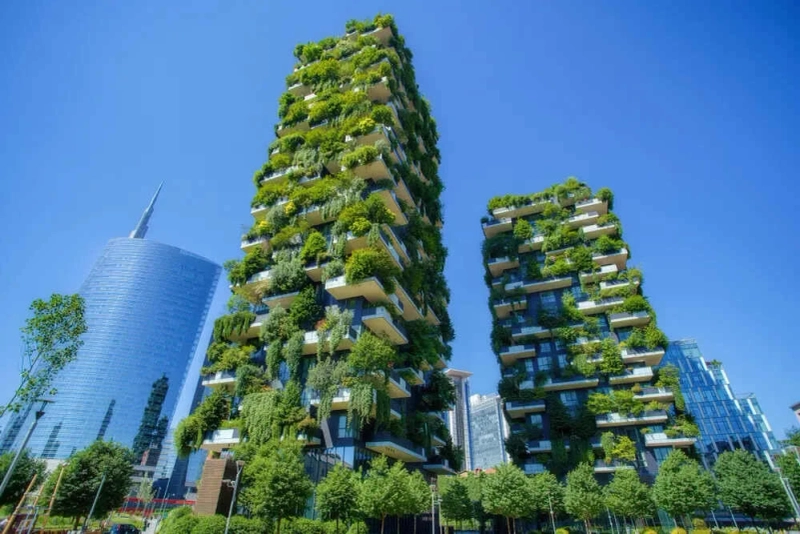The sustainability wave is cresting over our modern world, as environmental awareness becomes not just common knowledge, but a global imperative. What is at the heart of this movement is green living—a term that encapsulates a lifestyle choice aimed at reducing individual and collective environmental impacts. For many, this begins with the buildings in which we live and work. Sustainable buildings are pivotal to this change, representing the intersection of eco-friendly design, construction, and operation. These structures take center stage in combating climate change and serve as bastions of environmental conservation. They offer us the chance to redefine our spaces to be in harmony with nature while underscoring the tangible benefits of living within our ecological means.
Understanding Green Building
What exactly is a green building? It\'s a structure designed with the environment in mind. From the drawing board to the day-to-day operations, each stage is carefully planned to reduce the ecological footprint. But this isn\'t just a practice grounded in altruism; it offers pragmatic advantages. Economically, green buildings can reduce operational costs through lower energy and water bills. Environmentally, they minimize strain on our ecosystems by using fewer resources and generating less waste. Socially, they foster a connection between occupants and their environment, creating spaces that are not only efficient but also comfortable and enriching to live or work in. The cumulative effect of these benefits supports a shift toward a more sustainable societal framework.
Key Elements of a Sustainable Building
Building sustainability hinges on several core principles, each contributing to a larger goal. Energy efficiency sits atop this hierarchy; it\'s the most direct way to cut down on greenhouse gas emissions and reduce fossil fuel dependency. Adopting renewable energy sources, such as solar panels or wind turbines, further bolsters this effort. Equally important is resource conservation, ensuring that water and other materials are used judiciously and with foresight. In this vein, rainwater harvesting and recycling become more than just eco-friendly recommendations—they\'re essential components of a holistic sustainability approach. And at the core of these buildings is the health and well-being of their inhabitants. Ensuring a healthy indoor environment is just as critical as the building\'s outer sustainability features.
Tips to Improve Your Building\'s Sustainability
1. Energy Efficiency
Consider the strides made in energy-efficient technologies over the past few decades. Today, a building\'s sustainability is often measured by its energy consumption. Upgrading to energy-efficient appliances and lighting—such as LEDs and CFLs—is a great starting point. But to truly optimize a building\'s energy usage, one must delve deeper. Insulation plays a pivotal role in this, acting as a barrier to heat loss or gain, depending on the season. Sealing leaks and gaps ensures that your energy-efficient HVAC system isn\'t working overtime. Meanwhile, programmable thermostats can finely tune your energy consumption, making certain that you\'re using just what you need, when you need it.
2. Water Conservation
Water scarcity is an increasing concern worldwide, making conservation within buildings all the more important. This begins with the installation of water-efficient toilets, faucets, and showerheads. On a larger scale, rainwater harvesting systems can fulfill non-potable water needs and mitigate stormwater runoff, contributing to a building\'s overall water sustainability. Outdoors, xeriscaping—landscaping that reduces or eliminates the need for supplemental water from irrigation—is an intelligent approach to beautifying spaces without depleting water resources.
3. Use of Sustainable Materials
The materials we use to build and remodel are just as important as how we manage our energy and water. Sustainable materials are those which have been sourced, manufactured, and delivered with minimal environmental impact. Recycled and reclaimed materials fit this bill perfectly, as do products from rapidly renewable resources like bamboo and cork. When materials are sourced locally, they reduce transportation emissions, supporting both local economies and the environment. Using these materials can not only decrease the carbon footprint of a building but also often results in enhanced durability and less maintenance over time.
4. Indoor Environmental Quality
The quality of the indoor environment is crucial, as most people spend a significant amount of time indoors. Sustainable buildings prioritize good indoor air quality, achieved by using materials and finishes that release few, if any, harmful chemicals or volatile organic compounds. Natural lighting is another facet of this, reducing dependence on artificial light sources while providing the psychological and physiological benefits associated with exposure to natural light. The strategic use of windows and skylights can maximize daylight while minimally impacting the building\'s thermal performance.
Challenges and Solutions in Green Building
Transition to sustainable building practices isn\'t without its obstacles. Upfront costs, despite the promise of long-term savings, can deter individuals and businesses alike. Resistance to changing long-standing practices, as well as a lack of widespread knowledge about green building benefits, contributes to slow adoption rates. However, innovative solutions are emerging. Financial incentives, such as tax credits and rebates, can make green upgrades more accessible. Education and advocacy raise awareness, while technological advances continue to bring down costs and improve efficiency. By meeting these challenges head-on, we can expand green building practices more broadly.
Conclusion
Embracing green living and enhancing building sustainability is more than a trend—it is a necessary pivot towards a responsible future. It is a commitment to the environment that we must undertake to safeguard our planet for coming generations. It\'s about changing perspectives, adopting new practices, and embracing a lifestyle that respects and preserves our natural world. By focusing on sustainability in our buildings, we make a powerful statement: we are ready to live in balance with the Earth. Let this be our legacy—a world where green living and sustainable buildings are not the exception, but the rule.



